Camping with a roof top tent in the winter can get darn right cold! There are many ways to attempt to keep warm…..Better sleeping bag, propane heater, another warm body….
Better sleeping bag will work great until it gets REALLY cold. Then your body stays pretty warm but your head, ears and nose suffer. I’ve done a ton of winter camping and at one time was involved with teaching winter survival…with and without even a tent….but at my age I’m all set with that!
Propane heaters work but some suggest it is dangerous to have a flame source in the tent with you and they certainly create a ton of condensation that makes everything wet in the RTT and the possibility of a CO danger.
Body warmth is a no brainer……all you need to do is convince your significant other that winter camping is wonderful……I’ve never had any success with this.
So this leaves some way to get warm air into the RTT.
Enter extremely inexpensive, Chinese Diesel Heaters….Available in various heat ratings from 3Kw to 8Kw
These heaters are sold on Ebay and AMAZON in two versions and run from $99 to a bit under $200 depending on heat output and features (as of March 2020) Do a search on YouTube for dozens of reviews and comments on these heaters.
There is a built in version where you get a heater and a bunch of parts to permanently mount in an RV, van or camper.
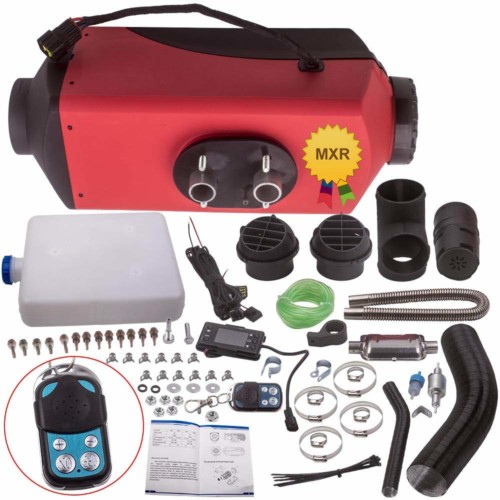
Or an “ALL IN ONE” unit that is portable, just add 12V DC and can be used in many different camping situations.

I ordered a 5Kw ALL IN ONE unit from AMAZON for $160 (March 2020)
These units require a 12V DC source to operate. I built a Portable Battery Box that you can read about here on my web site.
I don’t suggest running these units off your vehicle battery. Vehicle batteries are STARTING batteries and not DEEP CYCLE. Draining a vehicle battery down a few times will permanently damage the battery and you might not be able to start your vehicle in the morning.

Fill the heater with diesel fuel or Kerosene, plug it into a 12V DC source and push the start button and in about 5 minutes you will have wonderful heat blowing through a 3″ flexible hose into your RTT or ground tent or anywhere else you want clean, dry heat.
Although in a tent it might be difficult to kill yourself with carbon monoxide, I suggest a battery operated CO detector, just in case. Remember, all the combustion is happening in the heater, some distance from the tent. All you are receiving in the tent is warm air……
So simple to be nice and warm….But…..What fun is that! Modifications are needed!
First I built a plywood transit case for the heater. This will protect it while in my camping trailer.
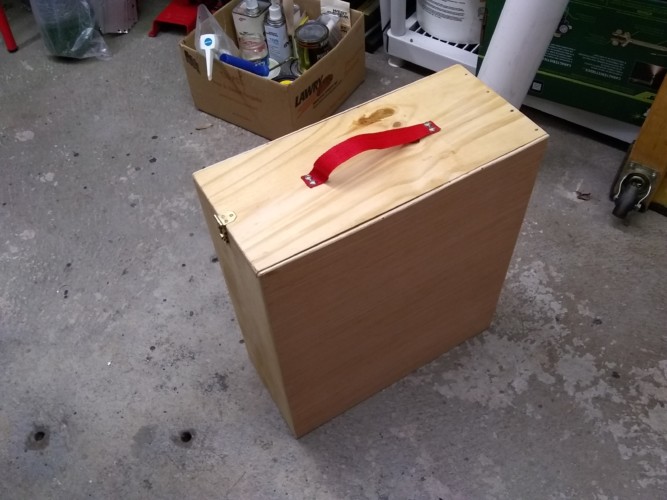
Next I wanted a way to easily connect the combustion air intake and the exhaust once I deploy the heater at the camp site.
The heater needed to be raised up a bit for the air intake and the exhaust to clear. A couple pieces of scrap 2″ X 2″ aluminum square tubing was cut and screwed to the existing feet on the heater.
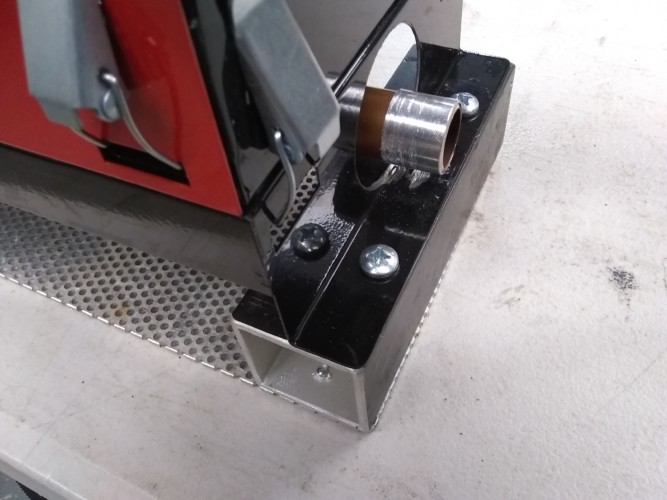
I had a scrap piece of perforated aluminum that I mounted as a heat shield to the bottom of the aluminum tubing. This will keep the heat from the exhaust pipe from causing an issue with grass or leaves if it is left on the ground.

Using copper elbows and pipe I fabricated extensions for the combustion air intake and the exhaust
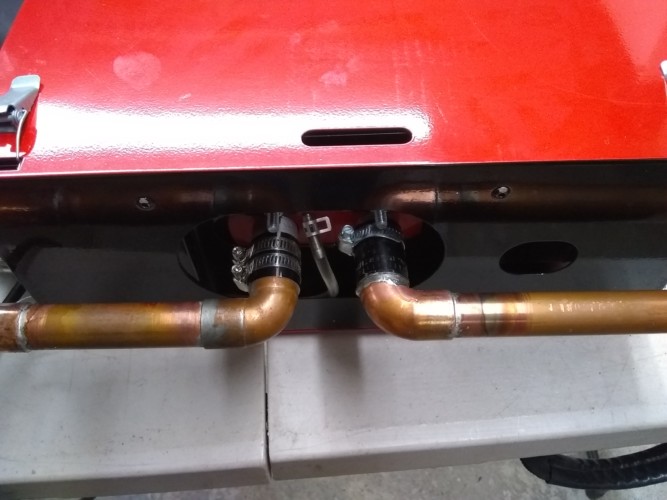
The exhaust pipe was wrapped with insulation to keep it from setting leaves on fire if they happen to blow under it if it was deployed on the ground
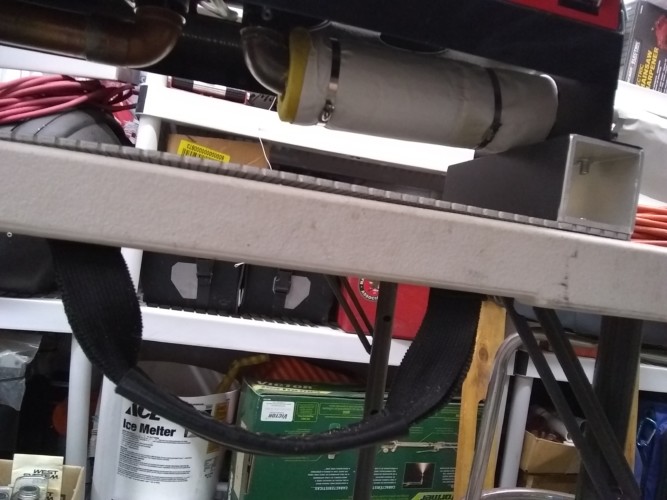
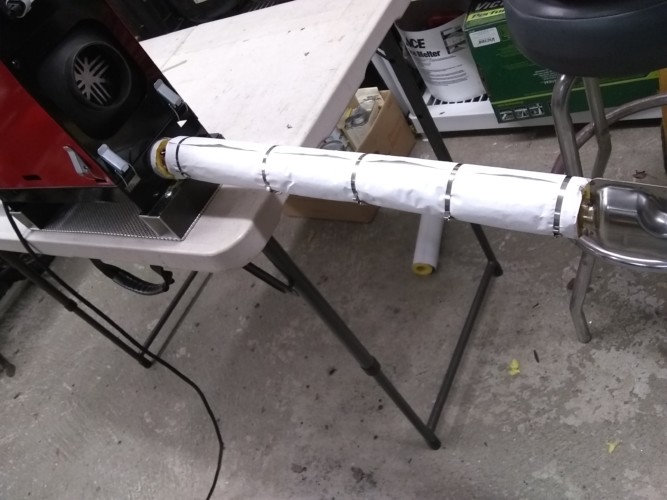
Insulation was secured with stainless steel wire ties
One strange design of the ALL IN ONE heaters is that the LED control panel stays with the heater. This LED panel contains the thermostat that regulates the heart. Doesn’t make sense that it would be outside in the cold and not in the tent where you are sleeping.
Using some telephone wire I extended the wire connecting it to the heater by 20′.
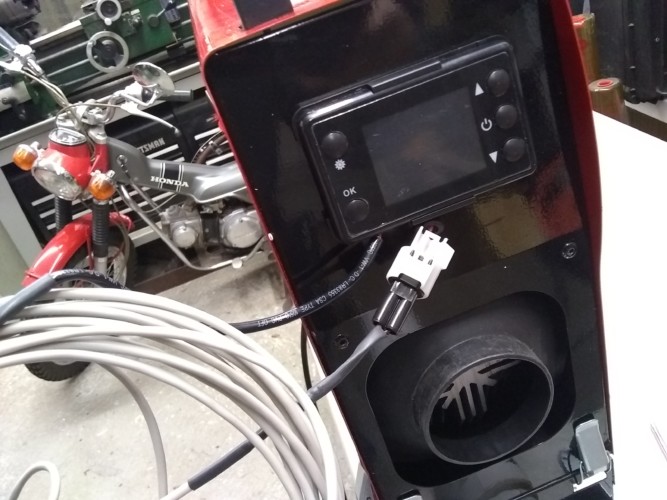
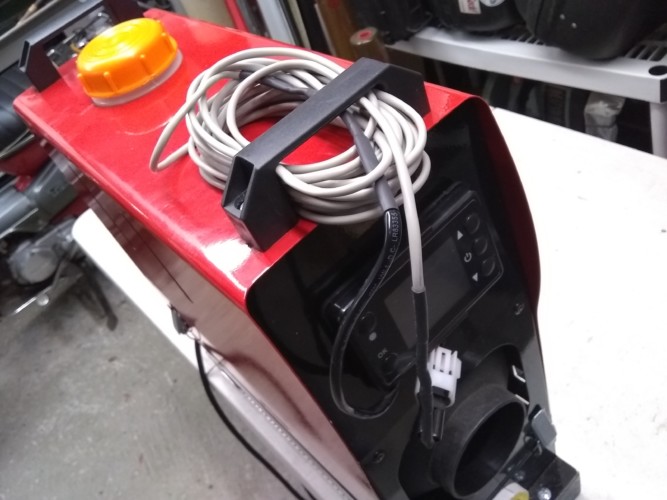
There is a convenient quick disconnect and the LED control panel snaps into a panel mount that makes this modification very easy. Now the control panel will be in the tent where is can monitor temperature and adjust as needed.

The heater makes a bit of noise. Especially the fuel pump which makes a clicking sound when operating. It doesn’t bother me, but it might bother other campers. I wrapped the pump in a piece of carpet to help quiet it a bit.
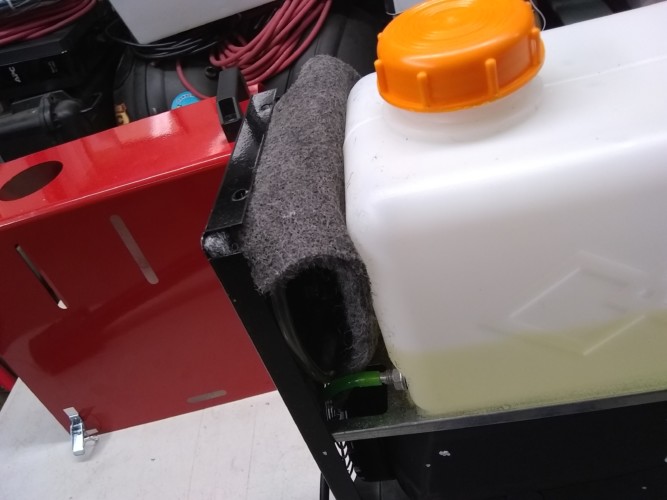
To further limit the noise, I mount the heater in my SUV or the enclosed bed of my pickup truck with the exhaust pipe exiting to the outside, and run a 16′ flexible insulated heat duct to the tent. The crappy power cord was replaced with a quality 20′ wire to supply 12V DC from the portable battery box which is located in the RTT trailer.
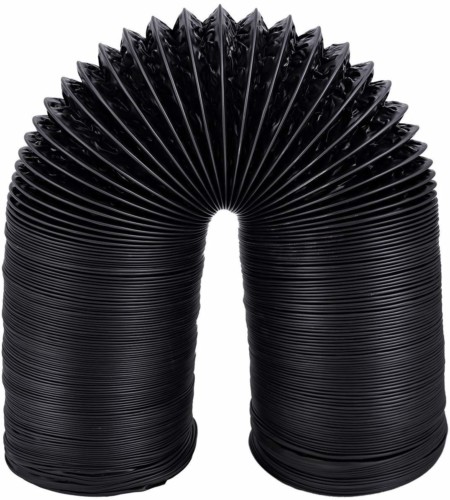
So there you have it….Diesel Heater Farkles!
But I’d still like to get my wife to winter camp. Maybe now that we have heat she will!

2 comments on “Chinese Diesel Heater Modifications”